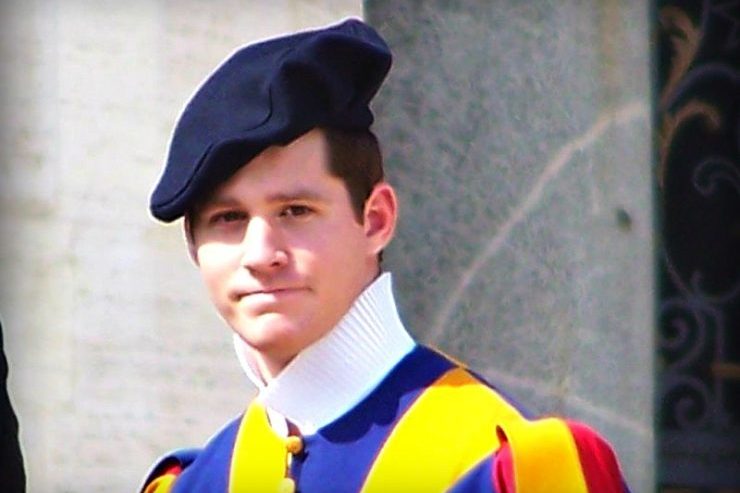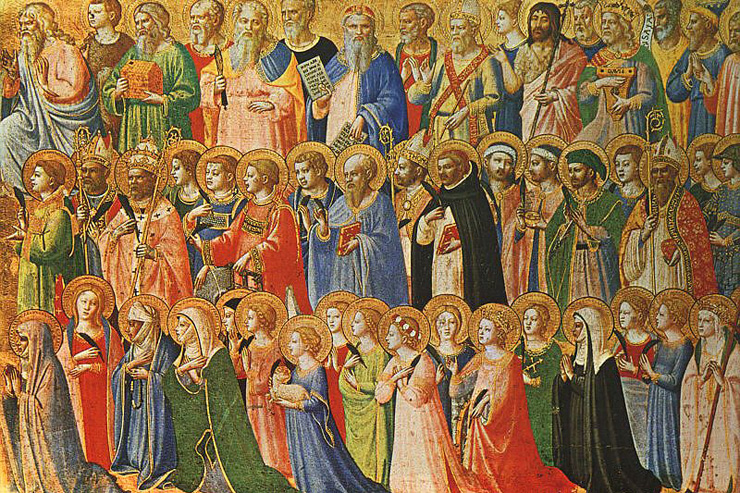What is the deal with Bob Ross? A cultural icon from the 80s and 90s, Bob Ross is a painter best known for his fro, pet squirrel, and crazy ability to turn a line of paint into a pine tree. How does a guy who paints landscapes on public television gain a cult following? I remember my sister watching him when we were young, but she was an artist, so it made sense. At the time, I couldn’t imagine a non-artist watching him stand there and paint for thirty minutes. But that’s because I hadn’t given him a chance. Give him five minutes, and you’ll be hooked.
There are many reasons he has a cult following, but I think a large part is due to his optimistic outlook on life. Surrounded by the anger, fear, pessimism, and divisiveness in our culture today, it’s refreshing to listen to someone who actually seems to love life, and who recognizes life as a gift. From the beginning of the show to his last words—God bless you, my friend—the entire show oozes with a calming optimism.
He’s no Michelangelo, of course. And most of us who watch will probably never take up painting. But the success of the show indicates how much we need joy in our lives today.
He doesn’t paint a bush, he paints a “happy bush.” He doesn’t paint a second tree, he paints a “friend” for the first tree. He doesn’t paint clouds, he paints clouds that “dance.” And he doesn’t hide the fact that he has chosen to have this outlook on life. After years in the army, he made the decision to leave behind his life as a “mean, tough person” and approach life differently.
When we wake up every morning, we have the same decision. We can raise our fist at the morning, bemoan the news, and allow the annoyances of daily life to get under our skin. Or we can say, in the words of Bob Ross, “It’s a good day to be alive. Every day is a good day to be alive.”
I think we know which approach our Christian faith calls us to choose. It’s not a matter of sticking our head in the sand and ignoring the problems in the world. But it is a matter of making a conscious decision to face our lives with joy.
Joy is not the absence of suffering; it’s the recognition that suffering has an answer. A positive outlook on life is not a Pollyanna denial of the existence of evil, but the understanding that after God created this world He didn’t run and hide.
As Saint Josemaría Escrivá wrote, “Christian optimism is not a sugary optimism; nor is it a mere human confidence that everything will turn out all right. It is an optimism that sinks its roots in an awareness of our freedom, and in the sure knowledge of the power of grace. It is an optimism which leads us to make demands on ourselves, to struggle to respond at every moment to God’s calls” (The Forge, 659).
Perhaps the cheerful calmness of Bob Ross does not come naturally to you. Even the struggle to smile at a coworker can be an opportunity for grace. Don’t dismiss it a small act; these are the acts that make us saints.
Christ himself told us what would set us apart from the world: “And This is how all will know that you are my disciples, if you have love for one another” (John 13:35). For many of us, this won’t mean washing people’s feet or offering up our lives for the innocent. It will mean smiling instead of scowling, complying instead of complaining, and being the cheerful witness to even the stranger in the grocery store. Again, in the words of St. Josemaria Escriva, “The cheerfulness of a man of God, of a woman of God, has to overflow: it has to be calm, contagious, attractive…; in short, it has to be so supernatural, and natural, so infectious, that it brings others to follow the Christian way” (Furrow, 60).
And what about the phrase that has become one of Bob Ross’ signature lines: “We don’t make mistakes, we have happy accidents”? Next Friday, we’ll look at what St. Francis de Sales would say about that.















